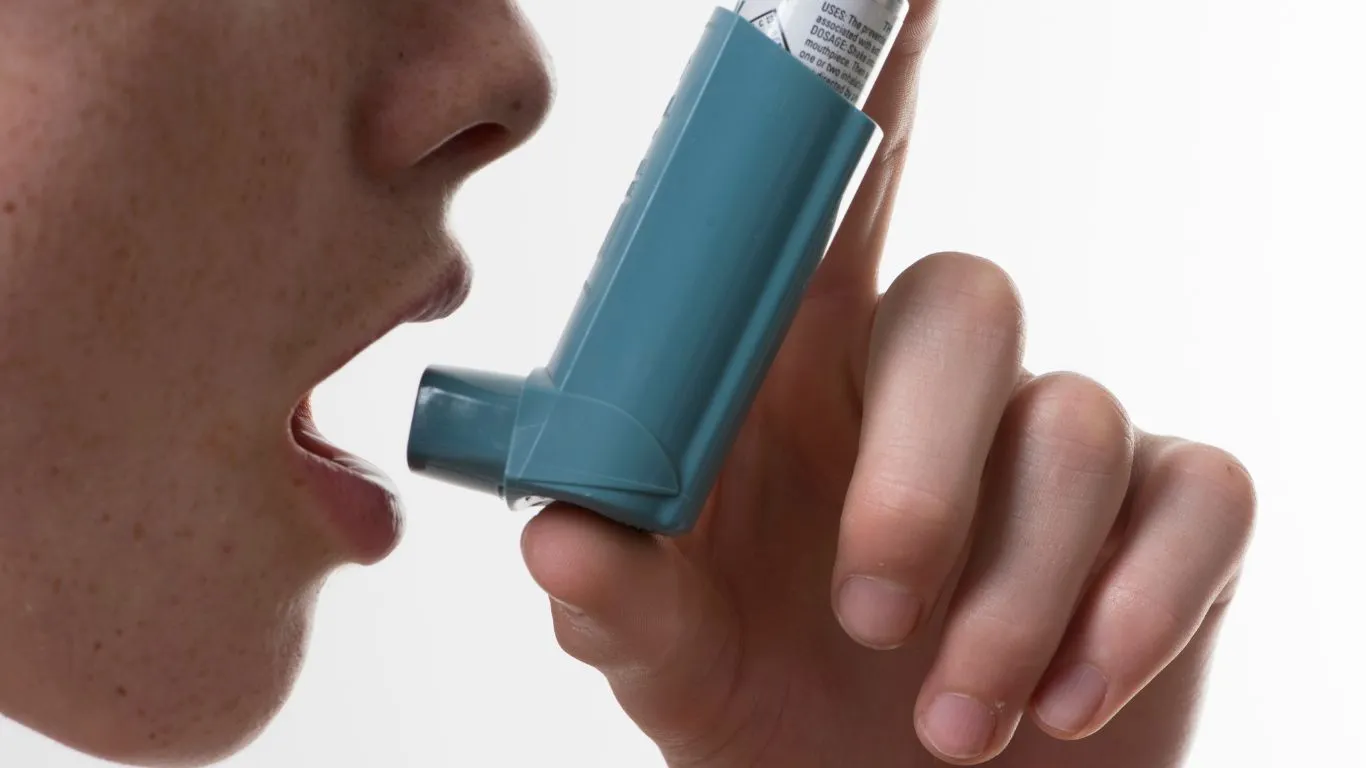Can Asthma Cause Rapid Breathing in Children? Effective Tips
As a Pulmonary Nurse, I’ve spent years working closely with children who suffer from asthma, and one of the most common questions parents ask is, “Can asthma cause rapid breathing in children?” It’s a concern that many don’t know how to manage until it’s too late. As someone who has seen firsthand how scary asthma attacks can be, it’s important to address this question thoroughly so parents and caregivers understand the signs, symptoms, and what to do if their child experiences rapid breathing due to asthma.
What Is Asthma and Why Does It Affect Breathing?
Before diving into whether asthma can cause rapid breathing in children, it’s essential to first understand what asthma is and how it impacts the respiratory system. Asthma is a chronic lung condition that causes the airways to become inflamed, making it harder to breathe. This inflammation can lead to a narrowing of the airways, increased mucus production, and muscle tightening around the air passages, all of which make breathing difficult.
As a nurse, I often explain to parents that asthma is a lifelong condition that can be managed but not cured. Symptoms can vary, and they can be triggered by several factors such as allergens, respiratory infections, or even emotional stress. When these triggers occur, it can lead to an asthma attack, which can cause shortness of breath, wheezing, coughing, and rapid breathing. These symptoms can vary in intensity depending on the severity of the asthma and the child’s overall health.

Can Asthma Cause Rapid Breathing in Children?
Yes, asthma can definitely cause rapid breathing in children. In fact, rapid breathing (also known as tachypnea) is one of the key symptoms of an asthma attack. When a child experiences an asthma flare-up, their airways become constricted, limiting airflow. This leads to less oxygen reaching the lungs, which in turn causes the body to try to compensate by breathing faster in an attempt to get more oxygen.
As a nurse, I can tell you that when I observe a child in an asthma attack, rapid breathing often comes hand-in-hand with other signs like wheezing or coughing. Rapid breathing in children is a sign that the body is trying to get more air in, but it is also a warning that the child may be struggling to breathe effectively. If you notice your child is breathing quickly, it’s crucial to act quickly and assess whether the asthma symptoms are worsening.
Recognizing the Signs of Rapid Breathing
When rapid breathing occurs, it’s important to know how to spot it. In children, rapid breathing may not always be obvious unless you know what to look for. Here are some key signs to watch out for:
- Increased Respiratory Rate: Normally, children breathe about 20 to 30 times per minute. If the rate goes above 40 breaths per minute, this could be a sign of rapid breathing.
- Use of Accessory Muscles: When a child has to use the muscles in their neck and chest to help them breathe, it means they are struggling. This is often visible as the child’s chest or ribs moving more than usual with each breath.
- Flared Nostrils: This is another sign that a child is trying to get more air into their lungs. When nostrils flare, it’s an indication that the child is having difficulty breathing.
- Restlessness or Anxiety: Rapid breathing often comes with a sense of panic or distress, so the child may appear anxious or uneasy as they struggle to catch their breath.
- Wheezing or Coughing: While wheezing and coughing are classic symptoms of asthma, they often accompany rapid breathing, especially during an asthma attack.

Why Does Rapid Breathing Occur in Asthma Attacks?
Rapid breathing during an asthma attack occurs because the body is trying to compensate for the lack of oxygen. When the airways become constricted due to inflammation or mucus buildup, less air gets in and out of the lungs. The body responds by trying to breathe faster to increase oxygen intake. This rapid, shallow breathing can often make the situation worse because it doesn’t allow the body to take deep, effective breaths.
As a pulmonary nurse, I’ve witnessed that many children who experience rapid breathing during an asthma attack also show signs of hyperventilation. Hyperventilation occurs when a person breathes too fast or shallow, which leads to a drop in carbon dioxide levels in the blood. This can cause dizziness, lightheadedness, and a feeling of breathlessness. It’s a vicious cycle that requires prompt treatment to break it and restore normal breathing.

When Should You Seek Medical Help for Rapid Breathing?
If you notice your child has rapid breathing during an asthma attack, it’s important to assess the situation and determine whether it’s severe enough to require immediate medical attention. Here are some guidelines to help:
- If your child’s breathing rate is consistently above 40 breaths per minute, seek medical help immediately.
- If your child is struggling to speak or has difficulty finishing sentences because they can’t catch their breath, get medical help right away.
- If the rapid breathing persists even after using their inhaler or other prescribed medications, it’s time to call for help.
- If you notice signs of fatigue or confusion, this could indicate that the body is running out of oxygen, and you should seek urgent care.
As always, if you are unsure or if your child’s condition is worsening, don’t hesitate to contact your healthcare provider or take them to the emergency room. Asthma attacks can be unpredictable, and it’s always better to err on the side of caution.
Treating Rapid Breathing in Children with Asthma
When it comes to managing rapid breathing in children with asthma, it’s all about acting quickly and effectively. If your child is experiencing rapid breathing during an asthma flare-up, it’s essential to follow their asthma action plan (if they have one). As a pulmonary nurse, I’ve helped guide many parents through this process, and it’s something I always recommend: being prepared can make all the difference in managing asthma symptoms. But let’s take a closer look at some key treatments that can help.
Step 1: Use the Rescue Inhaler
The first line of defense against rapid breathing and other asthma symptoms is often the rescue inhaler (or bronchodilator), usually containing albuterol or levalbuterol. This medication works by relaxing the muscles around the airways, allowing them to open up and make breathing easier. It’s often prescribed for quick relief during an asthma attack.
When you notice that your child’s breathing is becoming rapid or labored, it’s time to use the inhaler. In my experience, many parents worry that they might be using it too much, but in emergency situations like this, it’s important to follow the prescribed dose. If your child’s rapid breathing doesn’t improve after using the inhaler, don’t hesitate to seek additional medical care. Every child’s situation is unique, and sometimes one dose isn’t enough to bring the symptoms under control.

Step 2: Consider Other Medications
In some cases, especially if your child has a more severe asthma diagnosis, the rescue inhaler may not be enough. That’s where other medications like oral corticosteroids might come in. These are often prescribed for short-term use during an asthma exacerbation to help reduce inflammation in the airways and decrease the severity of the attack. Corticosteroids can be taken in liquid or pill form, depending on your child’s age and how well they can tolerate medication.
As a nurse, I always explain to parents that corticosteroids can be a bit of a game-changer when rapid breathing and other symptoms just won’t subside. However, they should be used cautiously and under medical supervision due to potential side effects like mood changes, sleep disturbances, and stomach irritation. But when used correctly, they can really help reduce the duration of an asthma attack.
How to Prevent Rapid Breathing and Asthma Attacks in Children
Preventing rapid breathing in children with asthma is, of course, the ultimate goal. Managing asthma is a lot like managing any other chronic condition – it’s all about creating a routine that helps reduce the frequency and severity of flare-ups. Let’s look at some strategies that can make a big difference.
1. Keep Asthma Triggers in Check
The first step in preventing asthma attacks (and by extension, rapid breathing) is understanding what triggers your child’s asthma. Common asthma triggers include:
- Allergens: Pollen, dust mites, mold, and pet dander are all potential triggers.
- Respiratory Infections: Colds, flu, or any other upper respiratory infections can easily trigger an asthma flare-up.
- Exercise: Physical activity can sometimes trigger exercise-induced asthma, which can lead to rapid breathing and wheezing.
- Weather Conditions: Extreme cold, heat, or humidity can exacerbate asthma symptoms in some children.
- Environmental Pollution: Air pollution or second-hand smoke can also trigger asthma symptoms.
As a nurse, I recommend working closely with your pediatrician to identify these triggers and take proactive measures to limit your child’s exposure to them. This can involve things like keeping windows closed during high pollen season, using allergen-proof bedding covers, and encouraging your child to wear a scarf or mask if it’s cold outside. Avoiding triggers is one of the most effective ways to prevent asthma attacks and, by extension, the rapid breathing that can accompany them.
2. Keep Your Child’s Medication Routine Consistent
Consistency is key when it comes to asthma medication. Even if your child seems to be doing well and hasn’t had an asthma attack in a while, it’s crucial to continue their prescribed treatment plan. Regular use of controller medications (like inhaled corticosteroids) can help keep inflammation in the airways under control and reduce the frequency of flare-ups.
Personally, I’ve seen a lot of children whose asthma becomes more difficult to manage because they only use their maintenance medications when symptoms appear. But asthma is one of those conditions where a little prevention can go a long way. Maintaining a consistent medication schedule – even when things are going smoothly – can significantly reduce the chances of rapid breathing becoming a serious issue.

3. Create an Asthma Action Plan
Having an asthma action plan in place is another essential way to manage your child’s condition and prevent rapid breathing. An asthma action plan is a detailed guide created in collaboration with your child’s healthcare provider. It outlines exactly what steps to take depending on the severity of your child’s symptoms.
This plan typically includes:
- Green Zone: The child’s symptoms are well-controlled, and no immediate action is required.
- Yellow Zone: Symptoms are worsening, and it’s time to take extra medication or use a rescue inhaler.
- Red Zone: The child is having a severe asthma attack, and emergency care is required.
Having an asthma action plan ensures that you and everyone involved in your child’s care – whether it’s teachers, family members, or babysitters – knows what to do in case of an emergency. In my experience, parents who have a solid plan in place feel much more confident when managing asthma attacks, which can reduce stress and make the process smoother for everyone.

When Should You Take Your Child to the Emergency Room?
Even with the best management and precautions, asthma can sometimes be unpredictable. As a parent, knowing when to seek emergency care is critical. If your child’s rapid breathing isn’t improving despite medication, or if they show signs of severe distress, it’s time to take action.
Some red flags to watch for include:
- Rapid breathing that doesn’t improve with a rescue inhaler.
- Difficulty speaking or appearing very fatigued or confused.
- Blue lips or face, which can indicate a lack of oxygen.
- Struggling to breathe, with the use of muscles in the neck and ribs to help with breathing.
In these cases, getting immediate medical help is essential. Don’t wait for the symptoms to worsen, and don’t hesitate to take your child to the emergency room if necessary.
Long-Term Management of Asthma in Children
When it comes to managing asthma in children, it’s not just about addressing rapid breathing during an attack. Effective asthma management requires long-term strategies to keep symptoms under control and improve your child’s quality of life. As someone who’s worked with many families navigating the complexities of childhood asthma, I can tell you that a comprehensive approach is key. While we’ve discussed short-term treatment during an asthma flare-up, it’s important to focus on preventive measures and consistent care that reduces the frequency of these episodes.
1. Regular Check-ups and Monitoring
One of the most important aspects of asthma management is ensuring regular check-ups with your child’s pediatrician or pulmonologist. Asthma symptoms can change over time, and your child’s treatment plan may need to be adjusted accordingly. It’s also essential to monitor their symptoms closely to detect any subtle changes that might indicate a flare-up is on the horizon. Regular visits help you stay on top of their condition and keep their asthma under control.
In my experience, parents who have regular check-ups for their child’s asthma often have fewer emergency situations. A healthcare provider will not only review your child’s medication regimen but also provide strategies for managing asthma during seasonal changes, growth spurts, or other developmental stages that may affect asthma symptoms. It’s all about keeping track and making adjustments where necessary.

2. Asthma-Friendly Lifestyle Changes
As a parent of a child with asthma, you can play a significant role in their long-term asthma management by making small lifestyle changes that support better lung health. While we can’t always control external triggers, there are several things you can do to create a more asthma-friendly environment at home. Some of these changes can make a world of difference in reducing asthma flare-ups and improving your child’s overall respiratory health.
For instance, maintaining an allergy-free home can significantly reduce asthma symptoms. I always recommend using HEPA filters in your child’s bedroom and throughout the home to trap dust, pollen, and pet dander. Regular cleaning and washing of bedding can also help minimize allergen exposure. Additionally, if your child’s asthma is triggered by cold air, make sure they bundle up in warm clothing, including scarves or face masks when heading outside during colder months.
Creating an asthma-friendly lifestyle also involves making some dietary choices. Some children find that certain foods, like dairy or processed sugars, can exacerbate their asthma. While these food-related triggers are highly individual, keeping a food journal to track any potential correlations can help identify patterns and triggers specific to your child.
Improving Asthma Control Through Exercise
While exercise can be a trigger for some children with asthma, it’s also a vital part of maintaining overall health and improving lung function. Encouraging your child to remain active, in consultation with your healthcare provider, is an essential part of asthma management. Exercise helps strengthen the lungs and improve overall fitness, which in turn can reduce asthma symptoms over time.
When children with asthma exercise, they should always start with warm-up exercises and gradually increase intensity. As a nurse, I’ve seen that a slow and steady approach helps prevent asthma symptoms from flaring up. You may also want to encourage your child to take their rescue inhaler before exercise, especially if they have exercise-induced asthma. That way, they’re better prepared to handle any potential issues.
Popular asthma-friendly activities include swimming, walking, and biking – these low-impact exercises are generally easier on the lungs. Always check in with your child during and after exercise to ensure they’re breathing comfortably. If you notice signs of rapid breathing or wheezing, it’s essential to stop the activity and administer a rescue inhaler if needed.

References
To learn more about asthma management and stay up-to-date with the latest research, consider checking out these reliable resources:
- National Institutes of Health (NIH)
- Health.com
- Centers for Disease Control and Prevention (CDC)
- American Lung Association
Disclaimer
While I am a Pulmonary Nurse with years of experience, the information shared in this article is intended for informational purposes only and should not be considered as medical advice. It’s always best to consult with a healthcare provider for personalized recommendations and treatment plans for your child’s asthma. If your child experiences severe or persistent symptoms, please seek immediate medical attention. Asthma can be unpredictable, and early intervention is key to keeping your child’s condition under control.
Managing asthma is a team effort, and having open communication with your child’s healthcare team, including your pediatrician and pulmonologist, is essential for long-term success. With proper care, support, and awareness, you can help your child lead a healthy, active life while managing asthma effectively.

Bianca Nala is a compassionate Nurse Practitioner with a strong background in primary and respiratory care. As a health writer for Healthusias.com, she combines her clinical expertise with a talent for clear, relatable storytelling to help readers better understand their health. Bianca focuses on topics like asthma, COPD, chronic cough, and overall lung health, aiming to simplify complex medical topics without losing accuracy. Whether she’s treating patients or writing articles, Bianca is driven by a single goal: making quality healthcare knowledge accessible to everyone.






